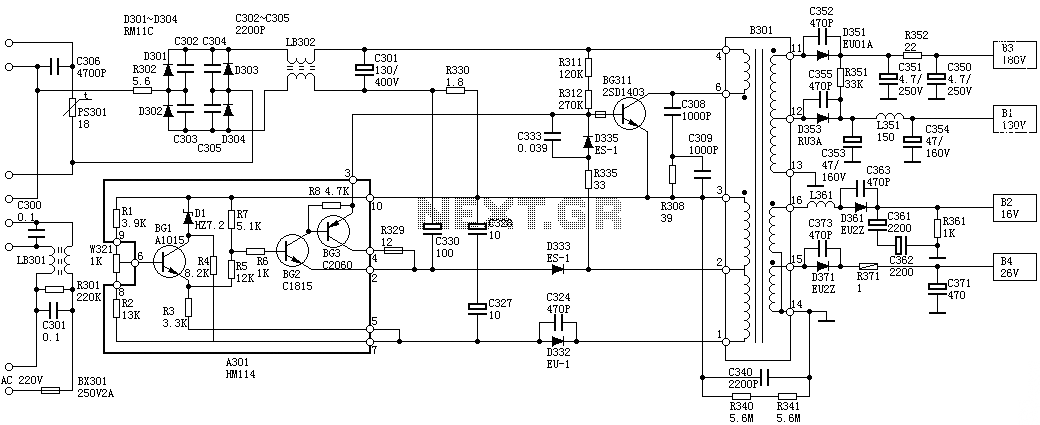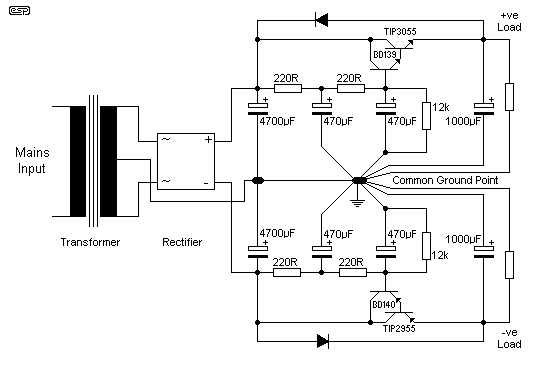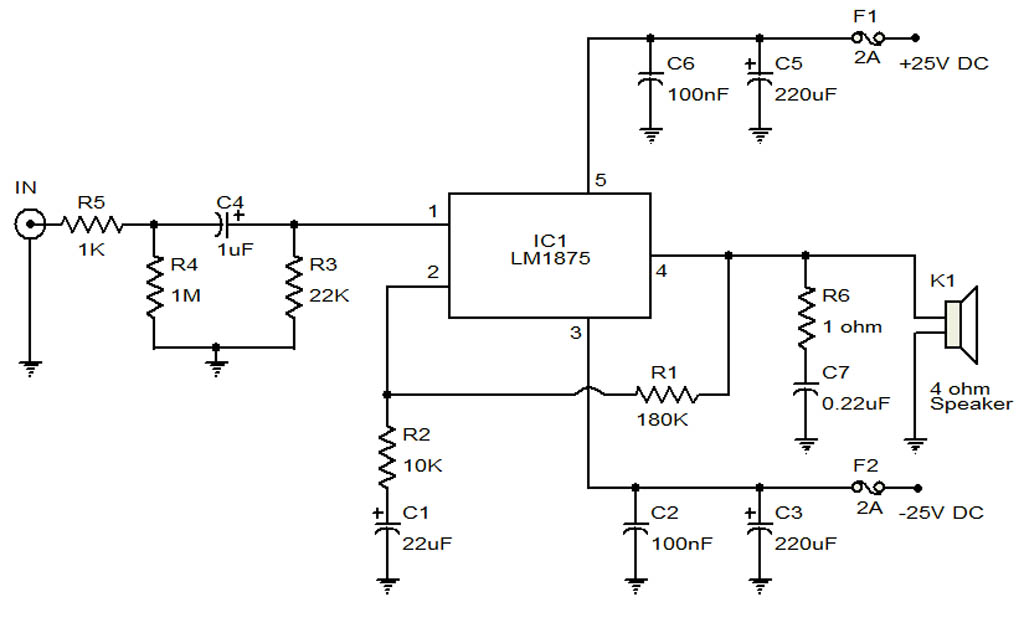
Sanyo 83P switching power supply circuit diagram

Oscillation: The positive terminal voltage of C310 is approximately 300V. The resistors R311 and R312 are connected to the switch BG311 at the B pole, while the B301 winding via the switching transformer (4) and (6) is connected to the C pole winding of BG311, initiating the conduction of the switch. In the B301 (2) and (3) windings, negative feedback voltage is applied. The components R335, D335, and C333 are connected to the B pole of BG311, causing BG311 to quickly saturate. Once BG311 saturates, the current through the B301 (4) and (6) windings increases linearly, allowing B301 to store magnetic energy. The current on the E side of BG311 flows through R330, producing a linearly increasing sawtooth voltage across R330. This voltage is applied through C330 to the A301 (2) pin, activating the internal MOSFETs at pins (2) and (3). The current through the B pole switch of BG311 is shunted, while the negative terminal voltage of C330 is also applied to the B pole of BG311, causing BG311 to exit saturation. When BG311 exits saturation, the polarity of the induced voltage across all windings of B301 reverses. The voltage across B301 (2) and (3) is fed back through R335 and C333, leading to the rapid closure of BG311. During the off state of BG311, diodes D351, D353, D361, and D371 conduct, converting the magnetic energy stored in B301 into electrical energy, which is then released to establish four output voltages of 180V, 130V, 16V, and 26V. After BG311 turns off, the B301 (4) and (6) windings, along with capacitors C308, C309, and C310, generate free oscillations. Following a half cycle, the 300V voltage charges C333 through R311 and R312. After a certain period, BG311 reaches its deadline and enters the next oscillation cycle. Regulation process: The voltage across the B301 (1) and (3) windings is rectified by diodes D332, C327, and C328, producing a DC voltage of approximately 30V, which reflects the output voltage magnitude. This voltage is sampled through A301 pins (7) and (10) into the internal sampling circuit, controlling the current through BG1, which in turn regulates the conduction levels of BG2 and BG3, ultimately managing the conduction time of switch BG311 and the output voltage magnitude.
The described circuit operates as a high-voltage oscillator, utilizing feedback mechanisms to regulate output voltages effectively. The oscillation begins with the activation of switch BG311, which is controlled by the positive voltage at the C310 terminal. The feedback loop involving R335, D335, and C333 plays a crucial role in saturating BG311, allowing the circuit to store energy in the transformer windings. The sawtooth waveform generated across R330 is essential for controlling the internal MOSFETs within A301, providing a mechanism for precise timing and energy transfer.
As the circuit transitions between states, the role of the diodes D351, D353, D361, and D371 is vital for ensuring that the magnetic energy stored in the transformer is efficiently converted into usable electrical energy. This conversion process is critical for producing the specified output voltages. The feedback regulation system, which samples the output voltage and adjusts the conduction times of various switches, ensures stable operation under varying load conditions. The overall design highlights the importance of feedback loops in power electronics, particularly in systems requiring high efficiency and precision in voltage regulation.Oscillation: C310 positive terminal voltage of about 300V, the R311, R312 is applied to the switch BG311 B pole, while the B301 via the switching transformer (4), (6) was added BG311 of C pole winding, the switch begins to conduct, in the B301 (2), (3) windings (2) n (3) negative positive feedback voltage, the R335, D335, C333 B pole added BG311, BG311 quickly saturated. After BG311 saturation, B301 (4), (6) winding current increases linearly, B301 stored magnetic energy.
BG311 E side current flows through R330, produces linearly increasing sawtooth voltage on the R330, the voltage through C330 to A301 (2) feet, so that the internal (2) Two foot control MOSFET, the A301's (3) feet on the B pole switch BG311 current shunt, while the negative terminal of the voltage C330 also through A301 (2), (3) was added to the foot of the B pole BG311, BG311 eventually out of saturation. BG311 Once out of saturation, the induced voltage polarity reversal of all the windings B301, B301 (2), (3) winding voltage by R335, C333 feedback, so BG311 rapidly closing.
During off BG311, D351, D353, D361, D371 are conduction, B301 magnetic energy into electrical energy is stored to be released in order to establish 180V, 130V, 16V, 26V four voltage. After BG311 off, B301 (4), (6) winding and C308, C309 and C310 produces free oscillations, after a half cycle, 300V voltage by R311, R312 to C333 charge, after a period of time, the end BG311 deadline, and enter the next cycle of oscillation.
Regulation process: Voltage winding B301 (1), (3), rectified by D332, C327 and C328 generated on the DC voltage of about 30V or so, reflecting the magnitude of the voltage magnitude of the output voltage, the voltage through A301 (7), (10) feet into the internal sampling circuit, thereby controlling BG1 current size, it controls the BG2, BG3 level of conduction, and ultimately control the switch BG311 conduction time. It controls the size of the output voltage.
The described circuit operates as a high-voltage oscillator, utilizing feedback mechanisms to regulate output voltages effectively. The oscillation begins with the activation of switch BG311, which is controlled by the positive voltage at the C310 terminal. The feedback loop involving R335, D335, and C333 plays a crucial role in saturating BG311, allowing the circuit to store energy in the transformer windings. The sawtooth waveform generated across R330 is essential for controlling the internal MOSFETs within A301, providing a mechanism for precise timing and energy transfer.
As the circuit transitions between states, the role of the diodes D351, D353, D361, and D371 is vital for ensuring that the magnetic energy stored in the transformer is efficiently converted into usable electrical energy. This conversion process is critical for producing the specified output voltages. The feedback regulation system, which samples the output voltage and adjusts the conduction times of various switches, ensures stable operation under varying load conditions. The overall design highlights the importance of feedback loops in power electronics, particularly in systems requiring high efficiency and precision in voltage regulation.Oscillation: C310 positive terminal voltage of about 300V, the R311, R312 is applied to the switch BG311 B pole, while the B301 via the switching transformer (4), (6) was added BG311 of C pole winding, the switch begins to conduct, in the B301 (2), (3) windings (2) n (3) negative positive feedback voltage, the R335, D335, C333 B pole added BG311, BG311 quickly saturated. After BG311 saturation, B301 (4), (6) winding current increases linearly, B301 stored magnetic energy.
BG311 E side current flows through R330, produces linearly increasing sawtooth voltage on the R330, the voltage through C330 to A301 (2) feet, so that the internal (2) Two foot control MOSFET, the A301's (3) feet on the B pole switch BG311 current shunt, while the negative terminal of the voltage C330 also through A301 (2), (3) was added to the foot of the B pole BG311, BG311 eventually out of saturation. BG311 Once out of saturation, the induced voltage polarity reversal of all the windings B301, B301 (2), (3) winding voltage by R335, C333 feedback, so BG311 rapidly closing.
During off BG311, D351, D353, D361, D371 are conduction, B301 magnetic energy into electrical energy is stored to be released in order to establish 180V, 130V, 16V, 26V four voltage. After BG311 off, B301 (4), (6) winding and C308, C309 and C310 produces free oscillations, after a half cycle, 300V voltage by R311, R312 to C333 charge, after a period of time, the end BG311 deadline, and enter the next cycle of oscillation.
Regulation process: Voltage winding B301 (1), (3), rectified by D332, C327 and C328 generated on the DC voltage of about 30V or so, reflecting the magnitude of the voltage magnitude of the output voltage, the voltage through A301 (7), (10) feet into the internal sampling circuit, thereby controlling BG1 current size, it controls the BG2, BG3 level of conduction, and ultimately control the switch BG311 conduction time. It controls the size of the output voltage.





